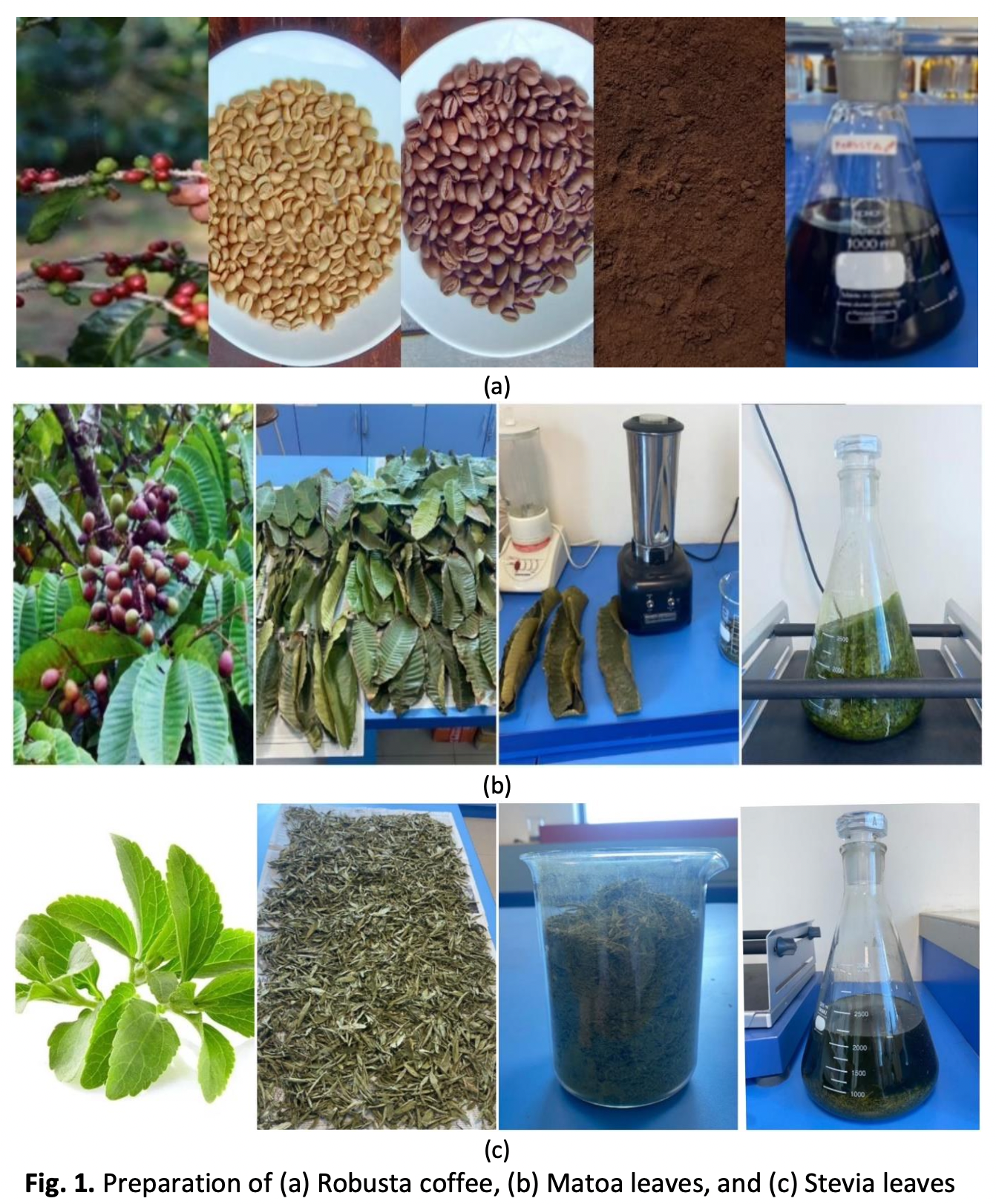Measurement of Antioxidant Activity Combination of Robusta Coffee (Coffea canephora), Matoa Leaves (Pometia pinnata) and Stevia Leaves (Stevia rebaudiana) with Various Solvent Extractions
DOI:
https://doi.org/10.37934/araset.31.2.8190Keywords:
Combination, Robusta coffee, Matoa leaf, Stevia leaf, AntioxidantAbstract
Antioxidants are chemical compounds that can donate one or more electrons to free radicals, so that these free radicals can be be suppressed. The human body does not have excess antioxidant reserves, so if there is excessive exposure to radicals, the body needs antioxidants. There is concern about the possibility of unknown side effects from synthetic antioxidants, causing natural antioxidants to become a much-needed alternative. The development of coffee drinks, growing rapidly and increasingly diverse. Some of them like the taste of pure coffee without any additives and many of them choose to add herbal plants, which have antioxidant properties to enhance their coffee drinks and also add natural sweeteners instead of sugar. This study aims to study the antioxidant activity of a combination of robusta coffee extract (Coffea canephora), matoa leaf (Pometia pinnata) and stevia leaf (Stevia rebaudiana), with various solvents, using the DPPH (1,1-Diphenyl-2-pikrihidrazil) method. The results showed that the ethanol extract of robusta coffee had antioxidant activity with an IC50 value of 18.96 ppm, the ethanol extract of matoa leaf had an IC50 value of 5.46 ppm, and the stevia leaf extract of ethyl acetate had an IC50 value of 17.54 ppm. The value of antioxidant activity in the combination of the three in comparison (4:4:2), has an IC50 value of 9.94 ppm. Robusta coffee, matoa leaves and stevia leaves are beverage that have very strong antioxidant activity. The results of the ANOVA test on the extraction various solvents and samples showed a value (p <0.01) indicating that there was a significant difference.
Downloads





























